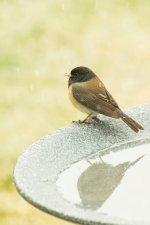canuck257
Senior Member
I have Photoshop Elements (PSE) 13 which I bought recently to replace a copy of 5 that came free with my wife's point and shoot several years ago. Having briefly tried some basic editing with it, I'm not sure it was the correct buy. I guess my problem is that I don't understand many of the processes that it is capable of and I don't have a specific "picture" in mind when I'm working with it.
To my questions;
Is there another software package that I should look at to work with or replace PSE which might be easier to understand or add to the capabilities of PSE? I'm shooting RAW and .jpg Fine and would like to be able (when I learn how) to manipulate both formats.
Does anyone know of a glossary of the abbreviations used in the field of post processing? I have some difficulty following many of the threads here for lack of understanding the terms.
I have seen some very attractive "frame effects" on pictures posted here, where does one source those?
Finally, at least for now, if you post a reply please remember this statement that was made to me when I started my flying instructor training. If you are going to teach the farmers wife to fly then you must communicate in "farmers wife" speak not in "pilot" speak.
I must add that I am gaining a huge amount of pleasure and knowledge from the members of this forum and witnessing photographic and creative standards that set formidable, but I hope achievable goals.
To my questions;
Is there another software package that I should look at to work with or replace PSE which might be easier to understand or add to the capabilities of PSE? I'm shooting RAW and .jpg Fine and would like to be able (when I learn how) to manipulate both formats.
Does anyone know of a glossary of the abbreviations used in the field of post processing? I have some difficulty following many of the threads here for lack of understanding the terms.
I have seen some very attractive "frame effects" on pictures posted here, where does one source those?
Finally, at least for now, if you post a reply please remember this statement that was made to me when I started my flying instructor training. If you are going to teach the farmers wife to fly then you must communicate in "farmers wife" speak not in "pilot" speak.
I must add that I am gaining a huge amount of pleasure and knowledge from the members of this forum and witnessing photographic and creative standards that set formidable, but I hope achievable goals.

